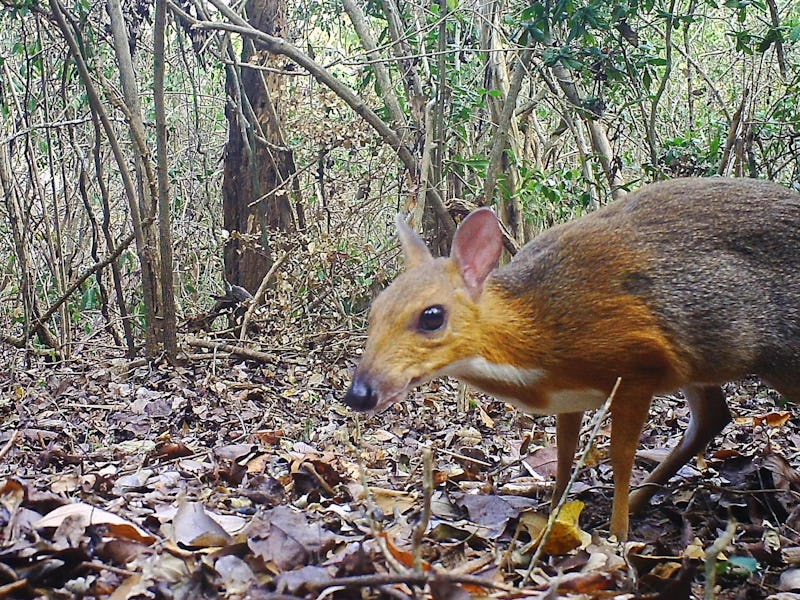Caught on camera: "Lost" mouse-deer photographed in wild for first time
The last sign of the creature was in 1990. What other long-lost animals are still out there?

Human ineptitude has put millions of species at risk of extinction and even caused a few to disappear entirely, but an adorable creature from the highlands of Vietnam is defying the odds.
A kind of mouse-deer that was thought to be “lost to science” for 29 years wasn’t actually so lost after all. It had been hiding in the country’s forests the whole time. The animal, described in the journal Nature Ecology and Evolution, is a silver-backed chevrotain. The silver-backed chevrotain, or mouse-deer, is a hoofed mammal about the size of a rabbit or small cat.
Until earlier this year, there had been little sign of the mouse-deer since 1990 — when a dead mouse-deer’s pelt was found. But after analyzing six months of camera trap data, scientists can now say that a population of the animals is in fact living in a region of Vietnamese woodland.
Andrew Tilker a doctoral student and Asian species officer at Global Wildlife Conservation, registered 208 sightings of the silver-backed chevrotain. These are the first images of the animal ever taken in the wild, Tilker’s team say.
“All we can say at this point is that there is a single confirmed population and we have reports of a second population in the area,” Tilker tells Inverse. “On one hand, the species appears to be locally abundant, on the other hand, the anthropogenic threat to ground-dwelling mammals is immense in this part of the world.”
The silver-backed chevrotain, caught on camera in Vietnam
The International Union of the Conservation of Nature classifies the silver-backed chevrotain as a “data deficient” species, but it wasn’t considered extinct. Instead, it was considered a “lost species” — one of the many. It is listed alongside 1,200 animals and plants on the Global Wildlife Conservation’s lost species list.
If the silver-backed chevrotain had gone extinct, it probably would have been due to hunting and trapping, Tilker says.
Alerting the larger scientific community to their existence also puts the silver-backed chevrotain back on poachers’ radar, Tilker’s team argue. In 2016, poachers Poachers have been known to comb through the scientific literature looking for hints as to where to find rare or “lost” species.
Images of the silver-backed chevrotain captured in Vietnam.
To combat the threat of poaching, the paper is vague about where these diminutive animals can be found.
“We wanted to tell the wider world what we found,” says Tilker. “But we also didn’t want to jeapordize what, at this point, is the single known population. That’s why when we put it out, we didn’t name the exact area where we found it.”
What about other “lost species?”
The survival of one tiny mouse-deer may not seem to make much of a difference to the global animal population. In May 2019, the United Nations noted that about one million species are threatened with extinction — many could disappear within the next few decades.
The silver-backed chevrotain pelts discovered in the 1990s, which until this paper's publication, were the last images we had of the animal.
However, Tilker argues that the work points to a “cautiously optimistic outlook for other “lost” species,” because — despite it being “lost” — it didn’t take a massive effort to find the silver-backed chevrotain. The researchers conducted interviews with locals, set up 29 camera stations, and had three camera trucks on the ground in Vietnam. That was enough to find a species that had eluded scientists for decades, he says.
“It goes to show that other species that have gone unrecorded for long periods of time might still be out there. With minimal investment, they could be found,” he says.
Abstract:
In an age of mass extinctions, confirming the survival of lost species provides rare second chances for biodiversity con- servation. The silver-backed chevrotain Tragulus versicolor, a diminutive species of ungulate known only from Vietnam, has been lost to science for almost three decades. Here, we provide evidence that the silver-backed chevrotain still exists and the first photographs of the species in the wild, and urge immediate conservation actions to ensure its survival.